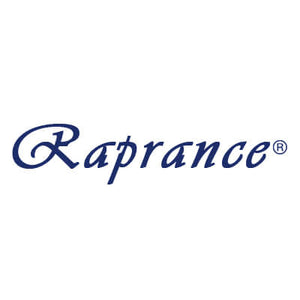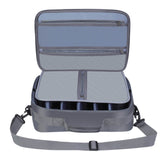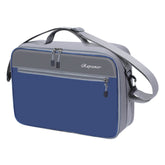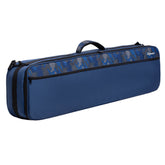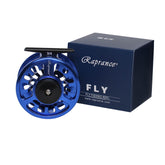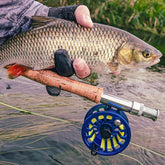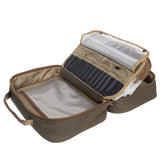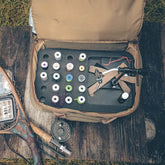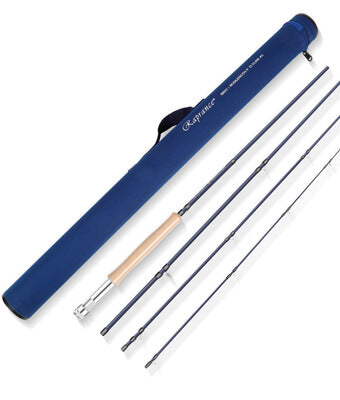How to Select fly fishing vest?
Fly Fishing Vest: Essential Gear for Every Angler
When I first stepped into the world of fly fishing, I quickly realized that having the right gear is essential for a successful outing. Among the most important pieces of equipment is the fly fishing vest, a vital tool that allows me to keep everything organized and accessible. A good fishing vest not only enhances my efficiency on the water but also provides comfort during long hours spent angling.

Fly fishing vests come equipped with various pockets and attachment points, making it easy to store flies, tippets, and other essential gear. This versatility is why I rely on my vest every time I head out to my favorite fishing spots. The right fly fishing gear can significantly impact the experience, and a well-designed vest makes it easier to focus on the art of fly angling.
As I navigate rivers or lakes, I appreciate the convenience and functionality that my fishing vest offers. Whether I’m a seasoned angler or just starting, the right vest can transform my fishing adventures. The thoughtful design of these vests ensures that I am well-prepared, allowing me to enjoy my time on the water fully.
Evolution of Fly Fishing Vests

The design and functionality of fly fishing vests have undergone significant changes over the years. I will explore the historical development of these vests and highlight the innovations that define modern versions.
Historical Development
The origins of fly fishing vests trace back to the early 20th century when anglers sought a practical way to carry their gear. Initially, traditional fishing vests were simple, made from heavy fabrics without designated pockets.
As the popularity of fly fishing grew, manufacturers started incorporating multiple pockets for ease of access. In the 1970s, the introduction of lightweight materials shifted vests to a more versatile option. Anglers began to expect better organization, leading to more refined designs that included specialized compartments for fly boxes, tippet spools, and tools.
Modern Fly Fishing Vest Innovations
Today’s fly fishing vests reflect advanced materials and design. Many feature mesh components for breathability, crucial for warm weather fishing. The use of synthetic fabrics enhances durability and water resistance.
Innovations include adjustable straps for improved fit and comfort. Some modern vests incorporate modular systems, allowing anglers to customize their setup based on specific needs. Pockets are now strategically placed to ensure easy access and organization.
Additionally, brands offer vests with integrated hydration systems, making it easier to stay hydrated during long fishing sessions. The evolution of technology in fly fishing vests continues to enhance functionality, adapting to various angling conditions.
Key Features to Consider

When selecting a fly fishing vest, several features are crucial to enhance the fishing experience. I focus on material and durability, storage options, comfort, and weight distribution. Understanding these aspects can lead to better choices for any fly fishing enthusiast.
Material and Durability
The material of the fishing vest plays a vital role in its lifespan and performance. Common materials include nylon, polyester, and canvas, each offering different levels of durability. I prefer nylon for its resistance to water and abrasions.
Look for vests with reinforced stitching. This adds longevity, especially in high-stress areas. Choosing a vest with UV protection can also help avoid wear due to sun exposure.
Water-resistant coatings are desirable for unexpected weather. Such features ensure that I stay dry when conditions change. Ultimately, assessing these attributes helps in selecting gear that withstands harsh fishing environments.
Storage and Pockets
The storage capacity of a fly fishing vest can greatly affect my fishing efficiency. An ideal vest should have multiple pockets in various sizes to accommodate different gear. I appreciate interior pockets for securing smaller items like tippet spools and fly boxes.
Exterior pockets provide quick access to essential tools, such as pliers and scissors. Molle webbing is another plus, allowing the attachment of additional gear.
Adjustable straps often accompany pockets, enabling me to customize the fit for optimal accessibility. Ensuring that pockets are secure yet easily reachable enhances the convenience and overall effectiveness of my fishing experience.
Comfort and Fit
Comfort is essential for long days on the water. A well-fitting vest allows for a full range of motion while casting. I prefer vests with adjustable shoulder straps and waist belts for better fitting.
Breathability is another important factor to consider. Vests made from mesh or those with ventilation features help keep me cool during hot weather.
Padding in the shoulder straps can distribute the weight of gear more evenly. This prevents discomfort and strain over long durations. Paying attention to these comfort features can make a noticeable difference in my fly fishing outings.
Weight Distribution
How weight is distributed across the vest affects my overall experience. A vest that balances weight properly can prevent strain on the back and shoulders. I look for vests with strategically placed pockets that keep heavier items close to my center of gravity.
Evenly distributed weight allows for better mobility. If a vest feels top-heavy, it could hinder my casting or make walking difficult.
Integrating weights or floatation elements can enhance stability. These features should be considered based on personal preferences and fishing conditions I encounter. A well-designed vest ultimately contributes to a more enjoyable fishing trip.
Top Fly Fishing Vests Reviewed

In this section, I will discuss several fly fishing vests that stand out in terms of functionality, comfort, and design. Each vest has unique features that cater to different fishing needs and preferences.
Orvis Pro Vest
The Orvis Pro Vest combines durability and comfort for an exceptional fly fishing experience. Made with a lightweight, water-resistant fabric, it offers breathability during warm weather.
This vest has multiple pockets, including zippered and mesh options, which provide ample storage for tools, fly boxes, and accessories. The adjustable straps ensure a perfect fit, while the exterior D-ring allows for easy attachment of accessories.
The internal organization is impressive, with easy access to essential items. With a sleek design, the Orvis Pro Vest is functional and stylish, appealing to serious anglers.
Patagonia Mesh Master II
The Patagonia Mesh Master II is designed with hot-weather fishing in mind. It features a breathable mesh back that provides exceptional ventilation, ensuring comfort even during long days on the water.
This vest includes multiple pockets, allowing for organized storage of flies, tools, and personal items. The pockets are strategically placed for quick access, enhancing efficiency while I’m on the move.
The adjustable waist and shoulder straps offer a customized fit, making it suitable for various body types. Its lightweight construction ensures that I won't feel weighed down as I cast my line.
Orvis Ultralight Vest
The Orvis Ultralight Vest is perfect for anglers who prioritize minimalism without sacrificing functionality. It is feather-light yet packed with practical features.
This vest has several pockets and attachment points tailored for quick access to essential gear. The back panel is ventilated, promoting airflow and comfort during active fishing sessions.
An adjustable waist allows me to fine-tune the fit. With a streamlined design, the Orvis Ultralight Vest is excellent for those who want to carry just the essentials while enjoying their time on the water.
Redington Blackfoot Vest
The Redington Blackfoot Vest offers an impressive balance of features and affordability. Made from durable materials, it stands up to the rigors of frequent use while remaining comfortable.
With multiple pockets, including large front storage, it accommodates various gear without feeling bulky. The adjustable straps provide a secure fit, ensuring I can focus on my fishing rather than adjusting my gear.
A unique feature of this vest is its built-in, removable foam fly patch, which keeps flies easily accessible. The Redington Blackfoot Vest is reliable for anglers seeking quality on a budget.
Raprance Fly Fishing Vest
The Raprance Fly Fishing Vest is designed with versatility in mind, catering to both beginners and experienced anglers. Built from weather-resistant materials, it protects my gear from the elements.
This vest features plenty of pockets, including expandable ones for larger items. The ergonomic design provides comfort during extended wear, and the adjustable straps allow for a personalized fit.
Additionally, the vest comes with several attachment points for larger accessories. The Raprance Fly Fishing Vest is an excellent option for those looking for functionality and adaptability on the water.
Accessories and Attachments

When it comes to fly fishing vests, the right accessories and attachments can significantly enhance functionality and convenience. Understanding attachment points, the use of retractors and D-rings, and specialized pockets for gear is essential.
Attachment Points
Many fishing vests feature multiple attachment points, allowing me to easily secure my gear. Common options include D-rings and clip loops.
- D-rings are ideal for hanging tools or gear. They provide a secure location for items like nippers or forceps.
- Clip loops can accommodate retractors or additional tools like tippet dispensers.
These points are designed to keep everything within reach, allowing for quick access while I’m on the water.
Retractor and D-ring Uses
Retractors are invaluable for quickly accessing tools without the risk of losing them. I often attach my forceps or line cutters to a retractor for immediate use.
- D-rings serve a dual purpose, holding retractors and other equipment.
- By keeping my tools attached to these points, I can focus on the fishing rather than searching for gear.
This setup ensures that I can easily manage my accessories while casting, enhancing my overall fishing experience.
Specialized Pockets for Gear
The design of specialized pockets in a fishing vest plays a critical role in organizing my gear. These pockets are tailor-made for various accessories.
- Fly boxes fit securely in larger pockets, keeping my flies organized and protected.
- Smaller pockets are perfect for tippets and other fishing gear, ensuring they remain untangled.
- Some vests even feature insulated pockets for keeping perishables or sensitive items like camera equipment safe.
Having dedicated space for each item minimizes the risk of losing track of my gear and optimizes my efficiency on the water.
Alternatives to Traditional Vests

I often explore various alternatives to traditional fishing vests that can enhance comfort and functionality while fly fishing. Options like sling packs, hip packs, fishing backpacks, and different types of vests offer unique benefits tailored to different fishing styles.
Sling Packs and Hip Packs
Sling packs and hip packs provide versatile storage solutions. Sling packs are worn across the back, allowing easy access to gear while keeping hands free. They often feature multiple compartments for organization and can hold essentials like tippets, flies, and tools.
Hip packs are an excellent choice for those who prefer a minimalist approach. Worn around the waist, these packs can hold the basics without restricting movement. Brands like Fishpond Upstream Tech are known for durable options that withstand harsh conditions.
Fishing Backpacks
Fishing backpacks combine storage with comfort, making them ideal for longer trips. These backpacks can hold rods, reels, and personal items securely. I appreciate pockets specifically designed for gear organization.
Many incorporate hydration systems, keeping me hydrated during extended outings. Additionally, some models offer features such as removable tackle boxes. Options like the Raprance Fly Fishing Vest exemplify this blend of utility and design, enhancing my fishing experience.
Mesh Vests and Strap Vests
Mesh vests and strap vests offer breathability and comfort in warmer weather. These vests are lightweight and designed with ample pockets for easy access to gear. The Raprance Strap Fishing Vest is an example of a practical option that provides adequate storage without the weight.
Fabric technology ensures quick drying, making these vests suitable for wet conditions. I find that the open design keeps me cool, which is especially beneficial during hot summer days. This type of vest gives me the flexibility I need for various fishing scenarios.
Optimizing Your Vest Setup

A well-organized vest setup significantly enhances my fly fishing experience. I focus on strategic placement of gear, managing weight effectively, and ensuring quick access to essential items.
Strategic Gear Placement
When I set up my vest, I make sure to place frequently used items at the front and top. This includes my fly boxes and tippet spools. I keep strike indicators and small tools within easy reach.
For larger items like a rod holder, I secure them on the back. This helps distribute weight and keeps the front area clear. I also use various pockets for specific gear, labeling them when possible to avoid confusion.
Weight Management Tips
Managing weight is essential for comfort during long fishing days. I consider the balance of the vest; it should not feel lopsided. Distributing equipment evenly across my body helps in maintaining a comfortable fit.
I avoid overpacking. Instead of bringing every item, I bring only what I predict to use. Lightweight gear like collapsible containers can help reduce bulk. I often compare gear weight before packing to ensure a practical load.
Maintaining Accessibility
Accessibility is crucial for efficiency. I design my vest so that I can access important tools quickly while casting. Keeping my hemostats, leaders, and nail knots on the front makes them readily available.
I attach a retractable tether for tools I use often, preventing them from getting lost. For longer items, like my net or rod holder, I ensure they do not interfere with my movement. This setup allows me to focus on fishing rather than fumbling for gear.
